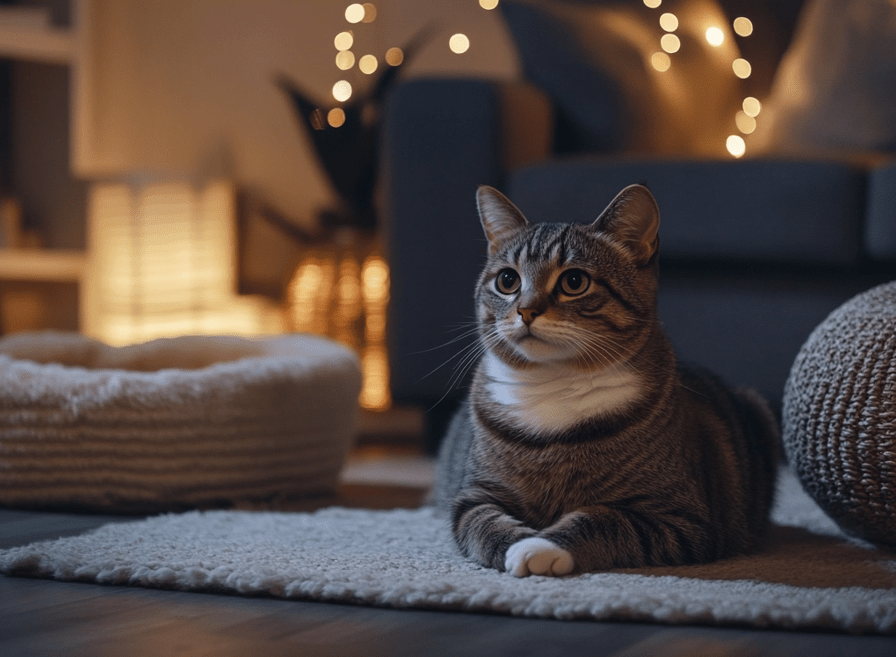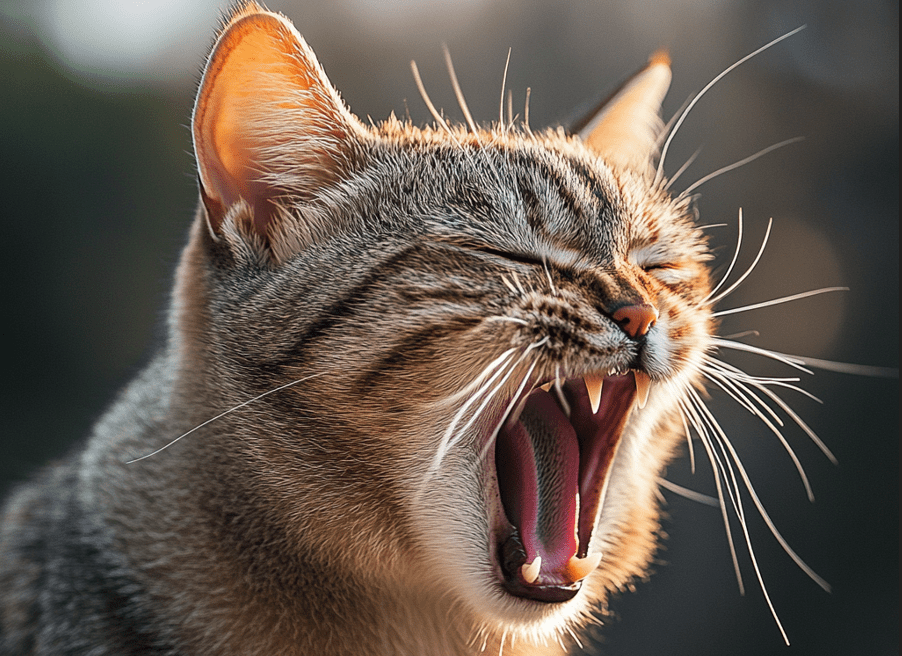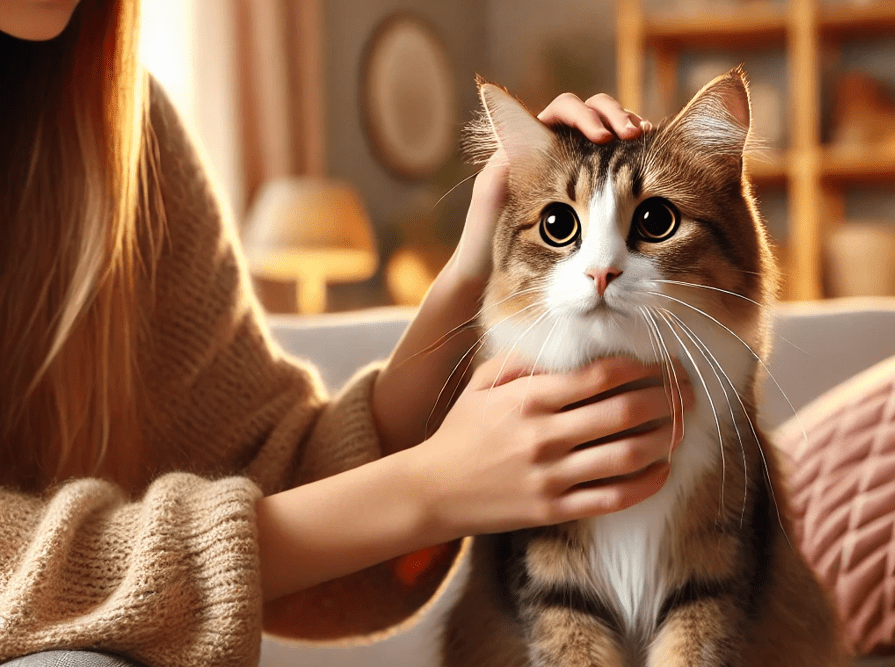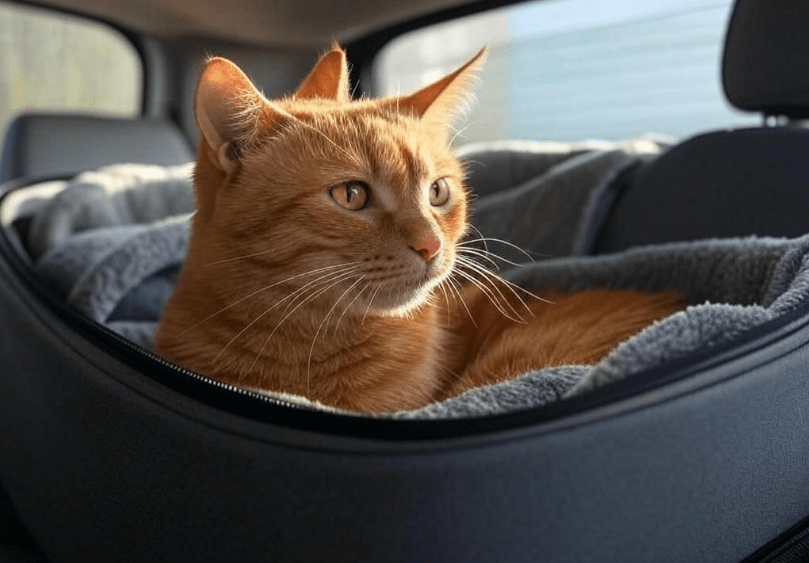
Going on a journey with your cat poses difficulties to both you and your pet. Cats generally feel uncomfortable during car rides no matter the destination which could be a veterinary visit or a vacation. The regular vehicle motion and unknown travel setting cause anxiety and dread to most cats. Taking proper steps will make travelling experience more relaxed both for you and your cat.
In this article, we will explore how to calm a cat during car travel, providing you with 10 proven tips to make the experience as stress-free as possible. The methods I share work equally well for traveling cats who know the way and cats who ride in a car for the first time. Both of you will enjoy the trip more.
Key Topics Covered:
1.Why cats get stressed during car travel
2.The importance of preparation and familiarization
3.Proven techniques to calm your cat
4.Handling motion sickness in cats
5.Creating a peaceful car environment
6.Using natural remedies and calming products
7.And much more!
This article will explain the specific actions needed to make car trips less stressful for your cat.
Why Do Cats Get Stressed During Car Travel?
To help your cat stay relaxed during car travel you must first know what causes their stress. Cat behaviors follow established patterns and they react strongly when their surroundings change. Cats become uneasy during car journeys since they leave their customary surroundings and remember disturbing events from their rides in the car such as vet appointments and house moves.
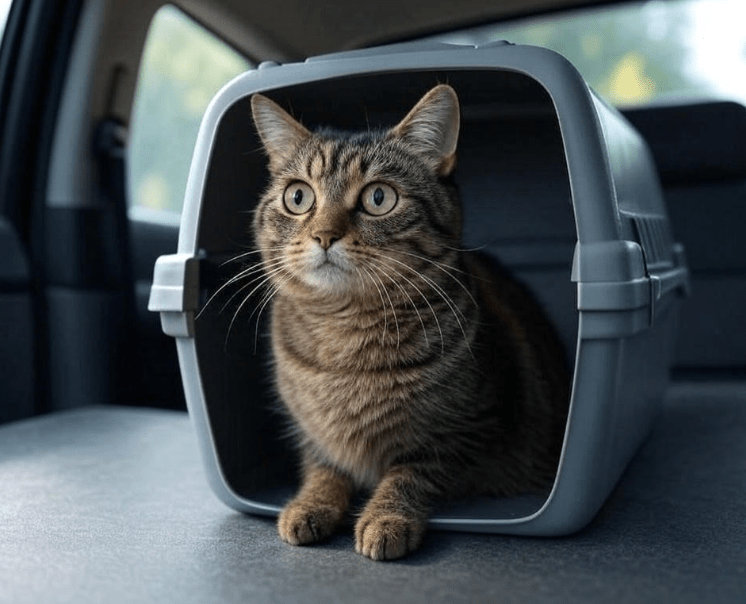
Numerous factors cause your cat to feel anxious during vehicle rides.
Unfamiliar Motion: Car movement confuses cats and leads them to feel disturbed inside the vehicle. The motion of moving vehicles causes anxiety for felines since they do not have regular exposure to such movement.
Confined Space: While safety carriers protect your cat during travel they can make your pet uncomfortable due to limited space. Being forced to stay still creates unwelcome pressure in their system.
Lack of Control: Cat owners observe that their pets want to control their surroundings. Your cat feels anxious when trapped in a car since it lacks freedom to move or escape.
Motion Sickness: Like human beings cats may develop motion sickness from car travel which produces nausea and brings up their stomach content. Your cat will face extra strain from the travel experience due to this factor.
Negative Associations: When your cat encountered unpleasant moments in the vehicle like vet appointments and extensive trips it created negative feelings towards car travel.
Learning about your cat’s specific stress causes will show you how to reduce anxiety before vehicle travel.
10 Proven Tips to Calm a Cat During Car Travel
We will now discuss workable solutions after explaining what causes distress in feline car passengers. These 10 tested methods will assist you in keeping your cat relaxed throughout the ride.
1.Start with Short Trips
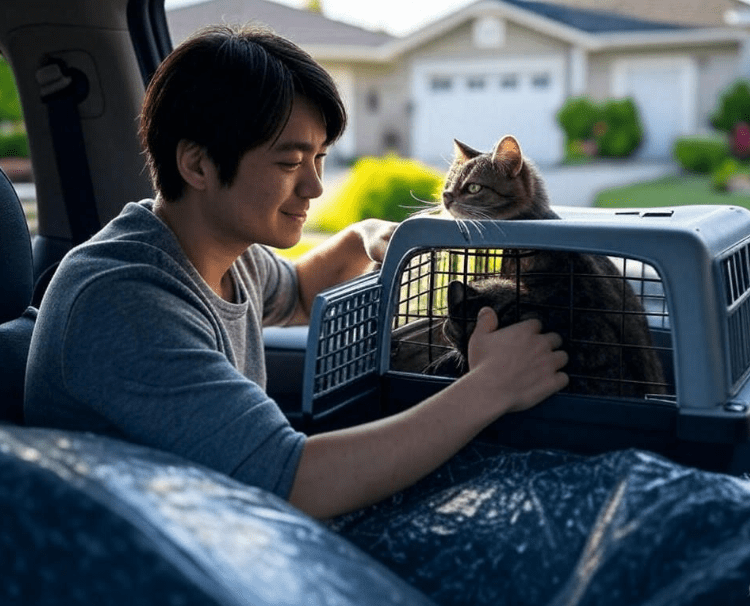
Let your cat experience brief car trips close to home as a way to become familiar with driving pressure and motion. Structure your first rides to short adventures then extend travel time to help them tolerate car rides better. Taking small car rides first lets your cat become comfortable and brave in driving.
2.Your cat needs a safe space in the vehicle to relax
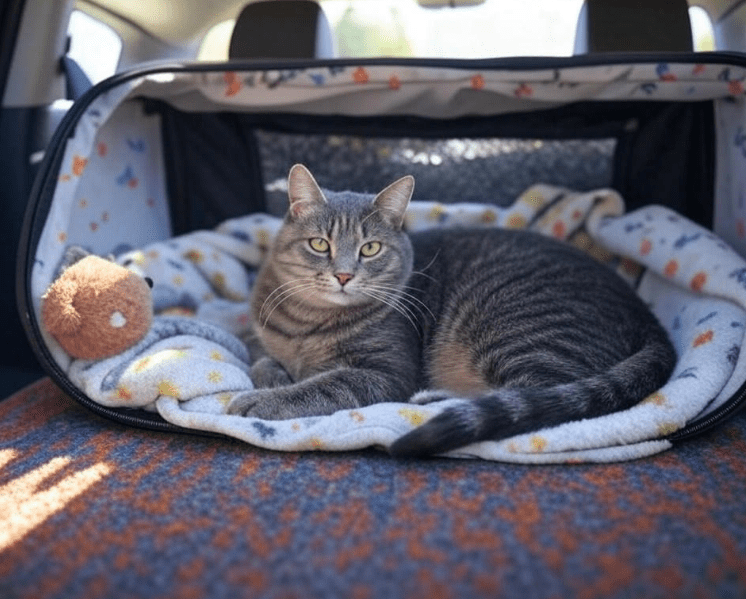
To keep your cat protected in your vehicle you need to have a carrier device. A suitable travel container needs to let your cat walk freely yet have enough space to feel protected. A soft bed or cosy blanket inside the carrier helps create a better environment. Let your cat explore the carrier ahead of time by having it in their environment for days before the trip begins. Putting rewards inside the container establishes a pleasurable link.
3.Teach your cat to accept the car environment
Begin by teaching your cat to feel relaxed inside your vehicle before making a lengthy journey. Let your cat examine the vehicle from the comfort of your home driveway. Allow your cat to examine and acclimate to the car by staying stationary. Their prior experience with the car environment shuts down stress response ahead of travel time.
4.Keep the Car Environment Calm
Higher levels of busyness in your car will make your cat more fearful. Silence and peacefulness help cats relax more during vehicle trips. Limit the use of loud music and maintain a quiet talk-free driving environment. Pets find peace through background noises created for pet relaxation. Control your driving speed changes to create a steady movement for your cat’s comfort.
5.Take Frequent Breaks
Indian your travel distance requires regular stops to ensure your cat’s comfort. Cats show similar reactions to people when they stay in one spot too long. Schedule periods for checking on your cat and offering drinking water with opportunities to move safely. During rest periods you should check if your cat needs to use the litter box.
6.Use Cat-Calming Products
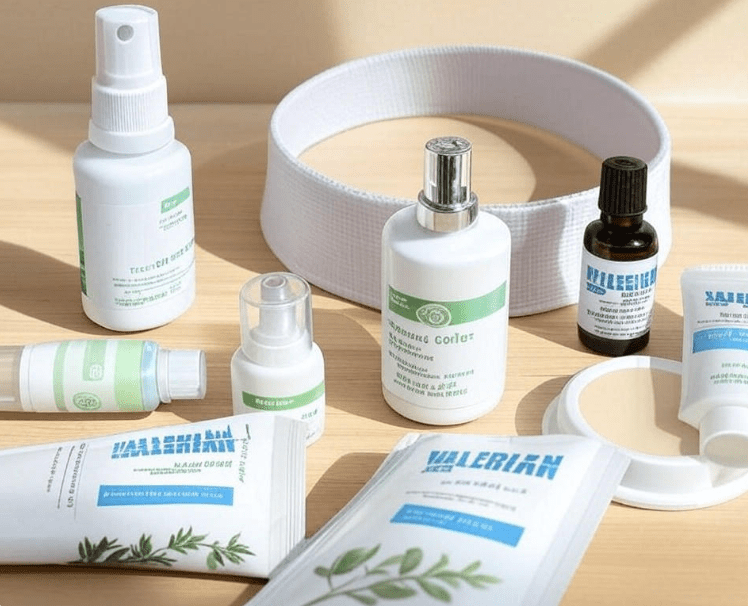
Many available products exist to ease your cat’s stress during automobile trips. Using the following methods gives the best results for calming your cat during vehicle rides:
The collar releases calming pheromones which copies how a mother cat naturally comforts her kittens through scent. Their purpose is to ease travel-related nervousness in cats.
Sprays that emit natural feline pheromones enhance the feeling of relaxation during stressful times. Apply the product on your cat carrier and car seats a few minutes prior to the journey to provide relief.
Several plants possess natural calming properties for cats with valerian root and chamomile known to relax felines. Speak with your veterinarian about using herbal products to treat your cat since they need safe treatment options.
7.Avoid Feeding Before the Trip
Take away your cat’s food just before travel since this stop will lower the chance of motion sickness and vomiting. Cats become more easily nauseous when driving with food in their stomach. To reduce motion sickness in your cat, feed them a light meal earlier than your travel time.
8.Provide Distractions
Taking your cat’s favourite toys and comfort items to occupy their mind will provide them relief. Simple familiar items like blankets and stuffed animals assist cats to feel safe. To calm your cat use toys that offer a gentle feeling and no strong sounds. Including a treat puzzle helps to keep cats mentally stimulated.
9.Consider Natural Supplements
When anxiety becomes too hard to handle you can try supplements created to reduce stress. Supplements designed for stress include L-theanine and valerian root which are natural compounds that help cats relax. Get advice from your vet to pick the correct method of helping your cat feel better and make sure the product works safely.
10.Consult Your Veterinarian
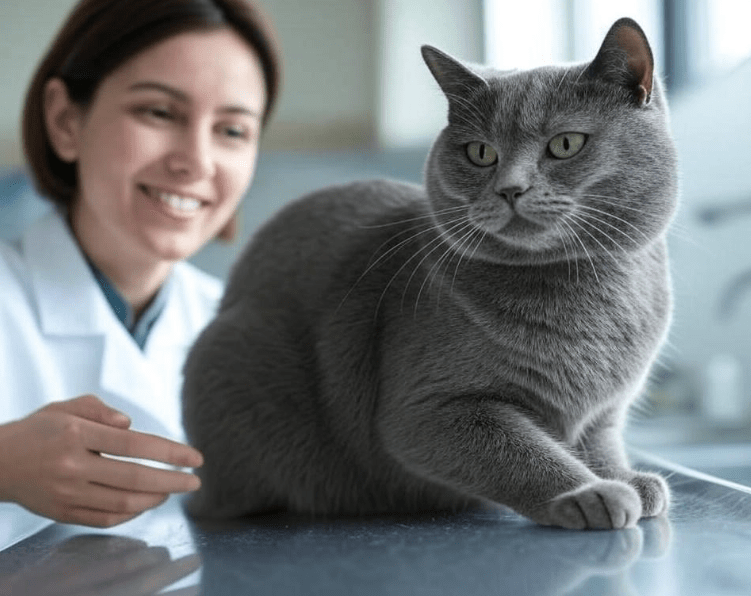
Visiting your veterinarian immediately is important because of your cat’s severe anxiety issues. They will suggest medicine that can keep your cat relaxed during transport. When cats experience severe stress both anti-anxiety prescription drugs and sedatives can safely treat them for short trips. Regularly check with your vet about medications and stick to their recommended treatment methods.
Conclusion
Taking your cat on trips becomes less anxious with certain preparations. Following these recommendations will make your cat less anxious while travelling in a motor vehicle. Begin with small rides while selecting and using a comfortable pet carrier works best along with maintaining relaxed spaces in your car.
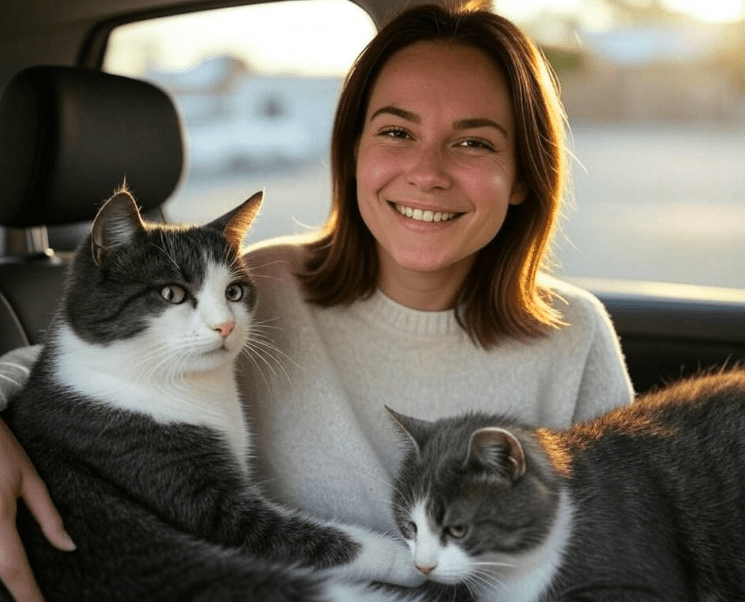
Each cat takes its own time to feel totally relaxed when travelling in a vehicle. Preparation together with proper tools and time helps your cat travel comfortably.
Following these well-established methods for calming cats during rides will create an easy experience for your cat and make your journey stress-free. Happy travels!

